#wei-han yang
Explore tagged Tumblr posts
Text





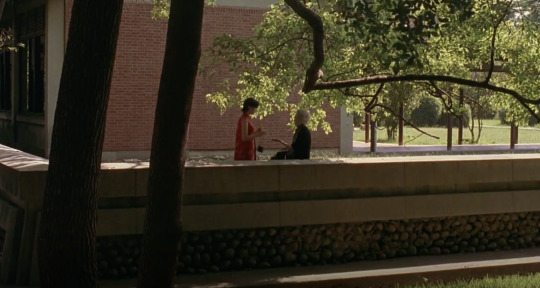




SUBLIME CINEMA #656 - YI YI
I've admired Edward Yang a long time for his haunting film 'The Terrorizers', but Yi Yi is even more refined, and a total masterpiece.
Beautifully rendered by Wei-Han Yang, Yang's cinematographer on the equally great 'Taipei Story'.
#cinematography#film#films#great film#movie#Edward yang#yi yi#taipei story#wei-han yang#cinema#movies#taiwan#taiwanese#Taiwanese cinema#Taiwan new cinema#楊德昌#cinema of taiwan#world cinema#classic film#drama#family
187 notes
·
View notes
Text


NE ZHA 2 has now surpassed The Super Mario Bros. Movie to become the 4th highest-grossing animated film of ALL-TIME. The film is now tracking to become the first animated film to surpass $2 BILLION at the box office.
#NE ZHA 2#Nezha#Jiaozi#Yi Qiao#Wei Yunyun#Xu Zhonglin#Yu Yang#Liu Wenzhang#Lü Yanting#Joseph#Han Mo#The Super Mario Bros Movie
18 notes
·
View notes
Text



Cdrama: Decline (2023)
#Cdrama #BL "i would wait until you come back." #Shorts #webdrama #江湖少年诀
Watch this video on Youtube: https://www.youtube.com/shorts/fXjf16fDpvI
#Jiang Hu Shao Nian Jue#江湖少年诀#Decline#Adventure of You Detectives#Bai Gu An#Shi Wei#Jiang Hu Shao Nian#夜中城白骨案式微江湖少年#2023#youtube#cdrama#chinese drama#Short Length Series#Web Serie#MGTV#Mango TV#MGTV Drama Channel#Simon Chen#Chen Jun Yu#Su Cheng Xi#Li Pei Yang#Sui Han Bai#behind the scenes#shorts#short video
12 notes
·
View notes
Text
GG Precinct

TV Shows/Dramas watched in 2024
Directors: Cheng Wei Hao & Yin Chen Hao
Writers: Chou Man You, Yin Chen Hao & Cheng Wei Hao
Mini-review:
Look, GG Precinct is not bad at all, but it makes the big mistake of selling itself as a spin-off/sequel to Marry My Dead Body (one of my favorite comedies of 2023). At the end of the day, if you change the characters' names and a few random references, there's nothing else connecting it to the movie. I mean, it even seems to forget the character development that happened there. Sure, it's still pretty hilarious and the mystery itself is engaging, but it feels like something we've seen a thousand times. I don't know, it wouldn't have hurt to add supernatural elements again, to sort of bring it a bit closer to the movie. Tbh, the best thing about it is the superb cast, whose acting and comedic timing makes the whole thing fun to watch. So yeah, it's not terrible, but it does feel like cash grab.
#gg precinct#marry my dead body#cheng wei hao#yin chen hao#chou man you#greg hsu#hsu kuang han#gingle wang#ma nien hsien#flower chen#lulu huang#ng ki pin#da her lin#tai chih yuan#tony yang#maria abe#huang hsuan#lin he xuan#kunda hsieh#lin bai sheng#winni huang#comedy#thriller#crime comedy#triggering content#taiwan#taiwanese drama#taiwanese cinema#2024 tv shows and dramas
8 notes
·
View notes
Text
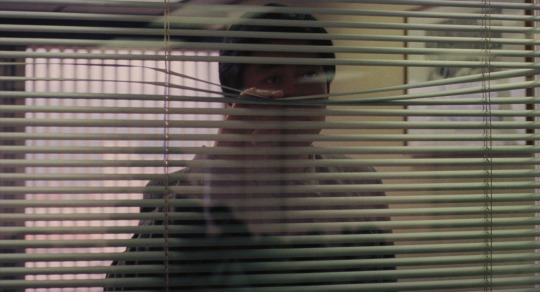


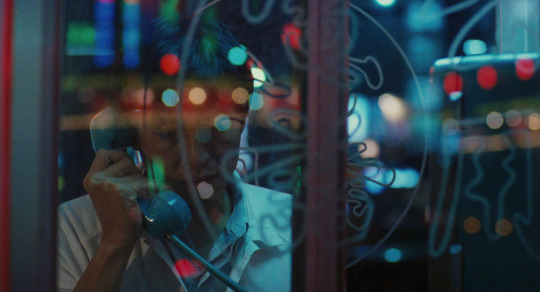
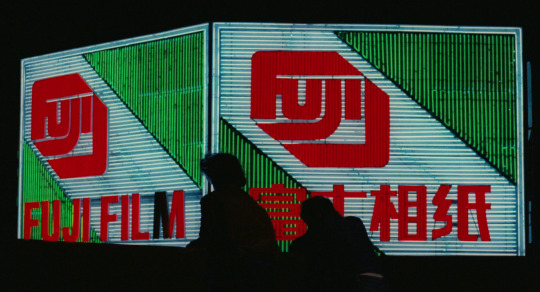


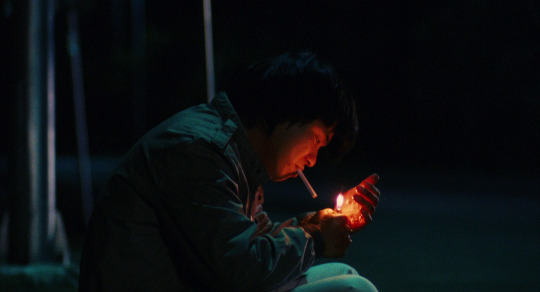
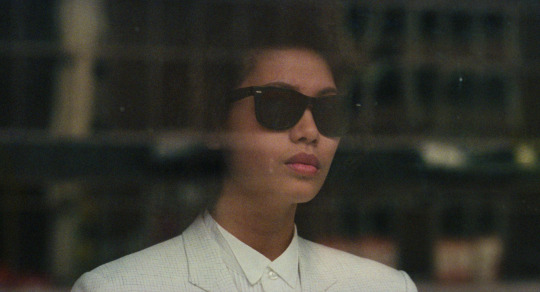
Taipei Story (1985) --------------------- dir. Edward Yang cin. Yang Wei-han cou. Taiwan
#taipei story#1985#edward yang#Yang Wei-han#taiwan cinema#Hou Hsiao-hsien#Tsai Chin#taiwanese cinema#new taiwanese cinema#Ko I-chen#1985 films
3 notes
·
View notes
Note
Is there any deeper meaning to Lan Wangji stealing the fragrance pouch Mian Mian gave to Wei Wuxian?
Well, yes.
He's jealous of that Mianmian hussy and wants Wei Wuxian to marry him and not her.
Hahahahaha!
Ahem. Let me explain. Flower or fragrant pouches are one among the 12 proposal gifts of ancient China.
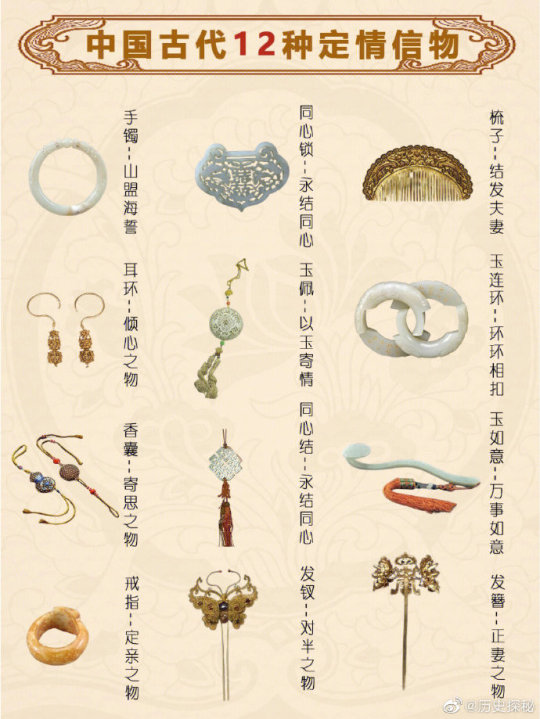
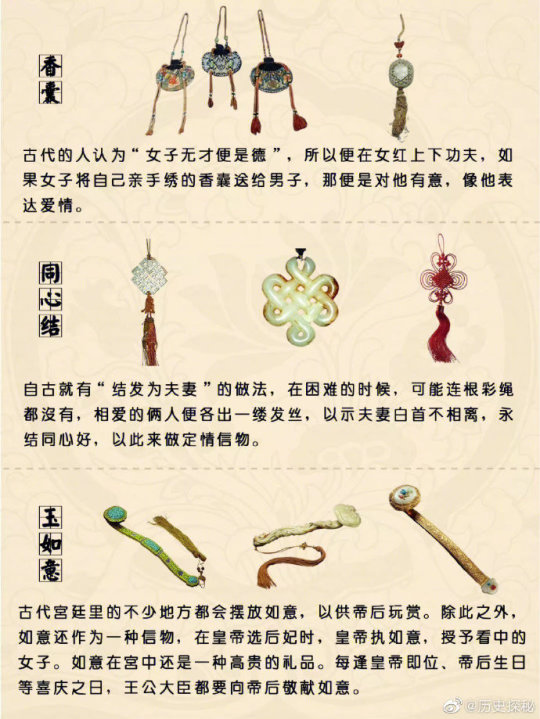
Here it is, number 7 among the 12.
The meaning behind the flower satchel is 寄情寄思 (lit. to entrust my love and longing). So a woman giving a man a flower satchel she made in ancient times means, 'Marry me, dude!' And if a man asks for a satchel made by the woman's own hands, it means he's saying, 'You so hot, baby! Marry me!'
The flower/fragrance satchels as a token of great love and promise are most known through two separate legends:
1.Yang Guifei and Emperor Tang Xuanzhong. In which, after Yang Guifei died during wartime, only her flower satchel was reclaimed. The rest of her body was reduced to shattered bones. When he was given this satchel, Emperor Tang Xuanzhong cried and kept it in his sleeves for the rest of his life. This legend was made into a poem 太真香囊子 (The Pouch is steeped in Fragrance) by the poet Zhang Hu.
2. The Book of Jin Jia Wu recorded Jia Chong's youngest daughter Jia Wu falling in love with his lowly aide Han Shou. To discreetly confess her love, Jia Wu made a satchel and gifted it to Han Shou. When Jia Wu detected the familiar scent of his daughter's fragrance recipe on Han Shou's body, he immediately cottoned onto their feelings. Luckily for the pair, Jia Chong was a considerably open-minded man for the time, so he blessed their love despite the gap in social stations and allowed the two to wed.
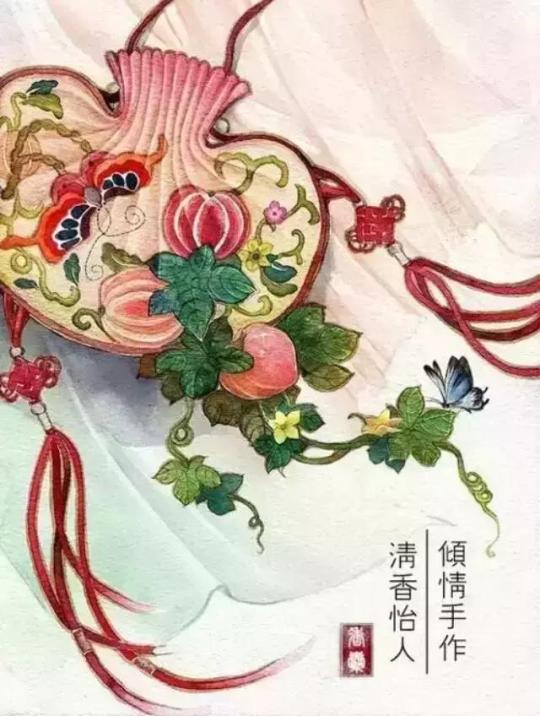
So Wei Wuxian asking Mianmian for a fragrance sachet is tantamount to asking her to marry him in the eyes of many, and at least very, very flirtatious. That's why Mianmian reacted the way she did.
And this was in front of Lan Wangji.... Imagine how Lan Wangji felt. So it wasn't without reason (other than the fact Lan Wangji was at a very low point in his life then) that Lan Wangji reacted like he did.
So Lan Wangji stealing WWX's fragrance pouch and keeping it on his body for decades after is equivalent to saying, 'You will not marry her. You will marry me!' without actually saying it.
That is to say, Hanguang Jun might not look like it, but he would fit right at home in one of those scandalous, overly dramatic telenovelas where the love rivals duke it out by bitchslapping each other. You just need to speak his language (of actions) to see this.
1K notes
·
View notes
Text
Legend VS LMK
Nüwa

Legend:
Name:
Mother Goddes, and Member of the Three Sovereigns of Chinese Mythology. The sister and wife of Fuxi. Nuwa is considered the goddess of creation and the female emperor of mankind. Her reverential name is Wahuang (Chinese: 媧皇; lit. 'Empress Wa'). That is due to Nuwa’s position of honor in the Chinese pantheon, Nuwa was given a character completely unique to her name – Wa. Nu is the character of woman and is often used as a prefix for goddesses.

Shes is a godess in Chinese folk religion, Buddihsm, Confucianism and Taoism
She is one of the most venerated Chinese goddesses alongside Guanyin and Mazu.
Origin:
Nuwa was created by her mother, the goddess Huaxu. While wandering the heavenly realms, Huaxu stepped into the footprint of the god of thunder Leigong and suddenly became pregnant. In the earliest versions of the myth, Huaxu gave birth in the earthly realm to only Nuwa.
In later versions, Huaxu gave birth to Nuwa and Fuxi. Nuwa and Fuxi were born with the bodies of snakes and the faces of humans, however, they could shapeshift into humanoid figures with two legs and a tail.
Nüwa & Fuxi Appearances:
The iconography of Fuxi and Nüwa vary in physical appearance depending on the time period and regional differences. In tomb murals and iconography, Fuxi and Nüwa generally have snake-like bodies and human faces or heads.
Nüwa is often depicted holding a compass or multiple compasses, which were a symbol of a dome-like sky. She was also thought to be an embodiment of the stars and the sky or a star god.
Fuxi and Nüwa can be depicted as individual figures arranged as a symmetrical pair or they can be depicted in double figures with intertwined snake-like bodies. Their snake-like tails can also be depicted stretching out towards each other. This is similar to the representation of Rahu and Ketu in Indian astrology.

As some tales of Nüwa and Fuxi, both sprang from the same mother at the same time, Taoists believed that Nuwa was the primordial personification of yin energy (female, gentle, intuitive, and receptive) and Fuxi was representative of the yang (male, fast, active, fierce). Coming together symbolized the reunion of the yin and yang energies which then united to create human existence.
Fuxi and Nüwa can also appear individually on separate tomb bricks. They generally hold or embrace the sun or moon discs containing the images of a bird or a toad (sometimes a hare) which are the sun and moon symbolism respectively. Them holding the sun and the moon appear as early as the late Western Han dynasty.

Other physical appearance variations, such as lower snake-like body shape, depictions of legs. and wings with feathers that protrude from their backs as found in the late Western Han Xinan Tomb or smaller quills found on their shoulders, and in hats and hairstyles.


the Gansu murals dating to the Wei and Western Jin period, one of the most typical features of Fuxi is the "mountain-hat" which looks like a three-peaked cap while Nüwa is depicted wearing various hairstyles characteristic of Han women. Both deities dressed in wide-sleeved clothing, which reflects the typical Han clothing style also commonly depicted in Han dynasty art.
Nüwa and Fuxi Other Stories:
In one version of their myth, soon after the birth of Nuwa and Fuxi, a great flood struck the earth, and only Nuwa and Fuxi remained unharmed after escaping by boat. As the years passed, and with only each other to keep themselves company, Nuwa and Fuxi longed for companionship. Unwilling to violate the laws of heaven by sleeping together as brother and sister, they prayed together seeking a sign of approval.
As they were the only humanoids of their kind left upon the earth, the Emperor of Heaven accepted their union. After mating, Nuwa gave birth to humanity, becoming the matriarch of mankind by giving birth to a ball of meat. Nuwa and Fuxi then divided the meat into pieces shaped as humans and scattered them across the world.
In another version of the creation tale, found in the Classic of Mountains and Seas, Nuwa and Fuxi lived upon legendary Kunlun Mountain. Trying to keep warm on a cold night, the twins created two fires. As the fires burned, they eventually became one. While watching the fires merge, Nuwa and Fuxi joined together as husband and wife. Deciding that they would like to have children, they molded clay into the shape of humans. Using their powers to imbue the small figurines with life, Nuwa and Fuxi created humanity.
Duyi Zhi volume 3, written by LiRong over a thousand years ago, gives a slightly different account of the Chinese creation myth – “There was a brother and a sister living on the Kunlun Mountain, and there were no ordinary people at that time. The sister’s name was Nuwa. The brother and sister wished to become husband and wife but felt shy and guilty about this desire. So the brother took his younger sister to the top of the Kunlun Mountain and prayed: “If Heaven allows us to be man and wife, please let the smoke before us gather; if not, please let the smoke scatter.” The smoke before them gathered together. So Nuwa came to live with her elder brother. She made a fan with grass to hide her face. (The present custom of women covering their faces with fans originated from this story).”
"But most versions give sol credit of humanity's creation to Nuwa. But in some of those Fuxi is credited with introducing a number of innovations and inventions that made significant improvements to the lives of his wife’s beloved creations. One of these, for instance, is the invention of fishing and domesticating animals. "
Creation:
After the goddess Hauxu gave birth to Nuwa, Nuwa roamed the earth alone. The earth was young and teeming with life, filled with blossoming trees and flowers. The lush grounds were covered with many types of animals, the skies were filled with birds, and the seas were full of fish. But while the earth was beautiful, Nuwa felt very lonely, despairing that there was no one to accompany her.
While walking one day, Nuwa was struck by the idea of creating living beings herself. First, she made a new type of bird that could not fly away from her by creating chickens. Then she wanted to make an animal that would be a constant companion, and Nuwa created dogs. On the third day, she made sheep. Then pigs. Then cows. On day six, Nuwa made horses On day seven, while Nuwa walked along a riverbank, she stopped to admire her reflection. As she stroked the hair from her face, she was struck with inspiration and thought to make life forms that looked like her. Nuwa began to scoop and mold yellow clay into figures that had arms and could stand upright upon legs. As she worked the mud in her hands, the figures came alive and began to move and speak. Soon, the creations began to sing and dance around Nuwa while honoring her. All of the loneliness Nuwa had known went away.
Thrilled at her results and filled with passion for her creation, Nuwa desired to make more humans faster. She realized that she could drag rope across the mud and mass produce them, as creating every person individually was beginning to take too much time and hurting her hands. Soon she began to whip the rope, flinging mud and making people faster and faster.
The people Nuwa molded by hand became the wealthy nobility. The ones she made by dragging the rope became commoners. And finally, the ones Nuwa made by whipping the rope became the servant class. As she finished making the last batch of humans it began to rain. Because some of these figures had not yet dried, the rain began to mark them and melt them. The last batch of humans that Nuwa created were damaged by the rain, and thus were the ancestors of those with sickness and deformities.
"She molded humans individually by hand with yellow clay. In other stories where she fulfills this role, she only created nobles and/or the rich out of yellow soil. The stories vary on the other details about humanity's creation, but it was a tradition commonly believed in ancient China that she created commoners from brown mud."
The Pillars:

One of the enduring myths of Nuwa is that of the repairing of the Pillar of Heaven. In the early days of earth’s existence, The earth was separated from the sky by four large pillars which had once been the arms and legs of the creator god, Pangu.
During these early days, the god of water, Gong Gong, and the god of fire, Zhu Rong, had been at odds for many years. Unable to hold back their fury at one another, they engaged in battle to determine who would be the god of the heavens. As they fought, fires raged and floods began to destroy the new earth.
Gong Gong was finally subdued by Zhu Rong, but in his rage, he slammed his head against Buzhou Mountain, one of the four pillars of heaven that had once been Pangu’s leg. An earthquake shook the earth, and the pillar collapsed tearing a hole in the skies.
Looking upon the earth, Nuwa was filled with compassion for her children who were suffering. The new creation of earth had been torn to shreds from the battle between the water and fire gods. Fires burned out of control and water poured in a deluge from the hole in the sky. Nuwa desired to help her children, so she sought out the sky turtle, Ao.
Nuwa threw herself at Ao’s mercy, hoping for a miracle to save her many children. The sky turtle, feeling compassion for the mother of humanity, took Nuwa’s sword and cut off one of his legs, offering it as a substitute pillar. After leaving Ao, Nuwa collected five colored stones (red, yellow, blue, white, and black) and melted them together to repair the hole in the heavens, while using Ao’s leg to replace the pillar.
( The five-colored stones symbolize the five Chinese elements (wood, fire, earth, metal, and water)
Waters poured on her relentlessly as she pushed the leg into position, and once in place, she shoved the ashes of burnt reeds into the remaining holes to plug the leaks. After replacing the pillar and stopping the deluge, Nuwa fell exhausted upon the earth and died.
While many are familiar with the Chinese myth of the Three Sovereigns and Five Emperors, some areas of south China revere Nuwa as one of the Three Sovereigns, reigning as Empress Wa after the death of Fuxi and the rise of Shennong.
Tying into China’s strong ancient matriarchal beliefs, after the reign of Fuxi, the Empress Wa’s rule was challenged by a neighboring tribal chieftan. After defeating the chief in battle, Nuwa dragged her enemy to the peak of Mount Buzhou. Filled with shame, the chief banged his head upon the mountain, tearing a hole in the sky.
As the waters poured from the heavens, the entire world soon flooded, killing all of creation except for her army which was protected by her godhood. Nuwa then found five colored stones and melted them together, patching the hole in the sky.
In other versions of the Pillar of Heaven myth, when Nuwa attempted to fix the sky with the five melted stones she soon found that there was not enough to fix the hole in the sky. Knowing there was no other choice, Nuwa used her own body to fix the remaining hole, sacrificing her life to keep her children safe. With the hole repaired the deluge ended, and humanity was able to thrive and multiply again.
"In all of the myths of the repair of the Pillar of Heaven, due to Ao’s leg being slightly shorter than the original pillars, Nuwa could not align the sky and earth the same as they were before. The sky slanted to the northwest. The earth slanted southeast.
Since the repair, the sun, moon, and stars all rise from the east and set to the west, and all of the rivers in China flow southeast. And due to the use of the multi-colored stones, the clouds of heaven now had different colors."
Other:
In southwest China, many of the minority groups still celebrate Nuwa as their primary goddess and honor her with the yearly Water-Splashing Festival. There are many temples to Nuwa and Fuxi, but the largest temple to the pair lies in Hebei Province, believed to be the ancestral home of all humanity.
The Classic of Mountains and Seas, dated between the Warring States period and the Han dynasty, describes Nüwa's intestines as being scattered into ten spirits.
In Shuowen Jiezi (c. 58 – 147 AD), China's earliest dictionary, under the entry for Nüwa author Xu Shen describes her as being both the sister and the wife of Fuxi. Nüwa and Fuxi were pictured as having snake-like tails interlocked in an Eastern Han dynasty mural in the Wuliang Temple in Jiaxiang county, Shandong province.
In the collection Four Great Books of Song (c. 960 – 1279 AD), compiled by Li Fang and others, Volume 78 of the book Imperial Readings of the Taiping Era contains a chapter "Customs by Yingshao of the Han Dynasty" in which it is stated that there were no men when the sky and the earth were separated. Thus Nüwa used yellow clay to make people. But the clay was not strong enough so she put ropes into the clay to make the bodies erect. It is also said that she prayed to gods to let her be the goddess of marital affairs.
In Ming dynasty myths about the transition from the Shang dynasty to the Zhou dynasty, Nüwa made evil decisions that ultimately benefited China, such as sending a fox spirit to encourage the debauchery of King Zhou, which led to him being deposed. Other tales have her and Fuxi as exclusively the "great gentle protectors of humanity" unwilling to use subterfuge Another telling of that story is from the famed Ming Dynasty novel Fengshen Bang. Nüwa is revered since Xia dynasty for creating the five-colored stones to mend the heavens, which tilted after Gonggong toppled one of the heavenly pillars, Mount Buzhou. Shang Rong asked King Zhou of Shang to pay her a visit as a sign of deep respect. Upon seeing her statue, Zhou was completely overcome with lust at the sight of the beautiful ancient goddess Nüwa. He wrote an erotic poem on a neighboring wall and took his leave. When Nüwa later returned to her temple after visiting the Yellow Emperor, she saw the foulness of Zhou's words. In her anger, she swore that the Shang dynasty would end in payment for his offense. In her rage, Nüwa personally ascended to the palace in an attempt to kill the king, but was suddenly struck back by two large beams of red light. After Nüwa realized that King Zhou was already destined to rule the kingdom for twenty-six more years, Nüwa summoned her three subordinates—the Thousand-Year Vixen (later becoming Daji), the Jade Pipa, and the Nine-Headed Pheasant. With these words, Nüwa brought destined chaos to the Shang dynasty, "The luck Cheng Tang won six hundred years ago is dimming. I speak to you of a new mandate of heaven which sets the destiny for all. You three are to enter King Zhou's palace, where you are to bewitch him. Whatever you do, do not harm anyone else. If you do my bidding, and do it well, you will be permitted to reincarnate as human beings." With these words, Nüwa was never heard of again, but was still a major indirect factor towards the Shang dynasty's fall.
Nüwa and Fuxi were also thought to be gods of silk
LMK:
Long ago, Nüwa sculpted humanity out of clay and mud. She believed her children would not survive the primordial sea of chaos, so she built the Pillar of Heaven and forged the cycles to protect them. But, a cataclysmic event left the pillar shattered. Nüwa crafted five-colored stones and reconstructed the pillar back to its original state. She entrusted four stones to the Four Symbols: the Vermillion Bird, the Black Tortoise, the White Tiger, and the Teal Dragon, the final one to be guarded by the Jade Emperor. After Monkey King's birth, Nüwa repurposed his stone to carry the Harbinger of Chaos. She was saddened by the creature's existence to sacrifice himself but knew that this was a necessary sacrifice to keep her children safe from the chaos beyond.
Thoughts:
Throughout the whole research into her real-world mythology. She has been credited for creating a few animals though monkeys are not mentioned that could be just my research or something else. But I actually found something similar to her pillar story number 3 that nearly matches the LMK version of her fixing the pillars. She was never in the JTTW. But some other thoughts on Nuwa and the pillars I think when she fixed the pillars she accidentally made Wukong. I don't remember where I read this but I think there was a version of JTTW that had the Jade Emperor say something about " Made with the essence of fragments of Godess Nuwas Power" Even if that might not be what I remember right. Maybe it could be in the LMK universe when the crew fought the Nine-headed demon, he used his chaos powers to bind them to certain sections of the wall.


MK is placed over his mural self, the silhouette of his destiny. And the others are placed over the sotnes that would later be them when they smashed them.

But then look at Wukong who is placed in Nuwas hand in the mural of her molding and creating humans.
This could be foreshadowing that it might be revealed and it might hold something of importance later. It might also explain why the goddess chose Wukong as the templet for her harbinger of chaos.
Other Media:
She does appear in the film "The Monkey King: Havoc in Heaven's Palace" and "Journey to the West II", both of which feature Nüwa creating Sun Wukong using one of the five-colored stones. The former film also features Nüwa sacrificing herself to rebuild Heaven, similar to her actions previous to Season 5.
Thnak you for reading if you have something i missed please leave it in the comments thank you :)
99 notes
·
View notes
Note
Any recs for East and SE Asian protags/focused writing? Any and all genres welcome!
just answered a similar ask the other day! it was very WLW focused though, so here are some queer of other varieties works that fit:
The Membranes by Chi Ta-Wei
Nuclear Family by Joseph Han
Afterparties by Anthony Veasna So
Beijing Comrades by Bei Tong
Ghost Town by Kevin Chen
For Today I am a Boy by Kim Fu
Burden of Ashes by Justin Chin
The Genesis of Misery by Neon Yang
Saints of Storm & Sorrow by Gabriella Buba
we’ve also got a whole section of Manga if that’s your jam
54 notes
·
View notes
Text
Working out Qjj side characters

I’m using the character guide at the end of vol 3. Characters I am clueless of are crossed out.
Let’s go!
Cen Yu
Chen Yang - he suffers, gets drunk with Qiao Tianya and pretends not to notice when Cezhou are banging. Probably responsible for keeping Xiao Chiye alive.
Ding Tao - the cutie patootie of qjj. Fell of a roof once whilst writing about Cezhou’s epic sexual tension. Baby that might grow up to be an actor if he decided guarding isn’t for him.
Fei Sheng
Fei Shi - I think he got battered with a shoe? Or is he besties with the shoe batterer?
Fengquan - shady eunuch #525
Fu Linye
Fuman - eunuch that Xiao Chiye was pally with until he threw him under the bus for regicide. These eunuchs do be eunuching.
Ge Qingqing
Gu Jin
Hai Liangyi - Work is just pain and suffering for him. Probably will only feel peace when he’s dead.
Han Cheng - Whiny little bitch boy.
Han Jin - the cleverer one.
Hua Hewei - I literally did not know this was her name when reading but she is the queen of manipulating boys mummy issues for personal gain. One day a eunuch will 100% fuck her over.
Hua Xiangyi - The dowager’s niece, getting pimped out for the cause.
Ji Gang - Shen Zechuan’s second favourite person. No Shizun fucking here.
Kong Qiu - Not to be confused with Kong Ling. has good vibes with Hai Liangyi. They’re probably the only decent people in court at this point.
Li Jianheng - Playboy emperor, listening to his dick got him stabbed. Should’ve listened to whoever it was who told him to get rid of Mu Ru. I want to say Hai Liangyi?
Li Jianyun - he’s dead.
Liang Cuishan
Mu Ru - Got pimped out to a eunuch, banged the emperor then stabbed him.
Pan Lin - May have beaten someone at a party with a shoe or is the father of a man who chose a shoe as a weapon.
Pan Xiangjie - see above.
Qi Huilian - Dead. Taught Shen Zechuan everything he knows.
Qiao Tianya - Shen Zechuan’s assistant. Has to put up with Cezhou banging whilst getting drunk with Chen Yang. Will play the Qin with pretty boys.
Tantai Hu - Nearly got sacked for disrespecting Xiao Chiye’s wife.
Wei Huaigu
Wei Huaixing
Xi Dan - banged his sister in law. Helping Shen Zechuan get that dowry.
Xi Hongxuan - decided it was a good idea to take the emperor to a brothel. Worst hangover ever. Dead.
Xue Xiuyi - Clever man buying children from brothels so he can take over the world.
Xue Xiuzhuo
Yao Wenyu - pretty boy playing a qin
Yu Xiaozai
Jiang Qingshan
Yang Cheng
Xiao Fangxu - Xiao Chiye’s dad
Xiao Jiming - Xiao Chiye’s brother
Xiao Xun - Xiao Chiye’s nephew
Lu Yizhi - Xiao Chiye’s sister in law
Zhao Hui - he hates Chen Yang.
Zuo Qianqiu
Qi Zhuyin - boss bitch. Good at military stuff. Exasperated by the shenanigans of her father.
Qi Shiyu - Qi Zhuyin’s dad. Likes women.
Lu Guangbai - BABE!!!!!! Also sad boy gone awol.
Lu Pingyan - father of a sad boy.
Kong Ling - Literally was having the worst day ever this volume.
Lei Changming - Bandit
Lei Jingzhe - Cleverer bandit
Zhou Gui - Worst host ever. Famously managed to offend both Shen Zechuan (talking about his mother) and Xiao Chiye (sending him a woman) in less than a 24 hour period. Kong Ling would like for him to stop talking.
According to my calculator I have a grasp of 72% of characters.
I’ve retained more than I thought.
27 notes
·
View notes
Text


NEZHA 2 is projected to potentially become the first ever film to pass $1 billion in a single market & it could potentially open to $400M in China this weekend!!!
#Nezha#Nezha 2#Jiaozi#Yu Yang#Yi Qiao#Wei Yunyun#Xu Zhonglin#Liu Wenzhang#Lü Yanting#Joseph#Han Mo#Chen Hao#Lü Qi#Zhang Jiaming#Yang Wei#Wan Pin Chu
15 notes
·
View notes
Text
Most Unhinged Bracket

Round 1
Vegas (Kinnporsche: The Series) vs Ruan Lan Zhu (The Spirealm)
Ray (Only Friends) vs Fu Yong Jie (HIStory 4: Close to You)
Boston (Only Friends) vs Ichikawa Mitsuo (Double Mints)
Phaya (The Sign) vs Jan (To Sir, With Love)
Mew (Only Friends) vs Ye Zun (Guardian)
Tan (Manner of Death) vs Tin (Triage)
Nawin (Laws of Attraction) vs Ayan (The Eclipse)
Yok (Not Me) vs Tol (Triage)
Nick (Only Friends) vs Noey (I Will Knock You)
Han Ying (Word of Honor) vs Yai (Big Dragon)
Black (Not Me) vs Kim (Kinnporsche: The Series)
Porsche (Kinnporsche: The Series) vs Taohu (The Miracle of Teddy Bear)
Ming (My Stand In) vs Kurosawa (Ossan's Love)
Zhou Zishu (Word of Honor) vs Kijima (The Pornographer Series)
Lhong (Tharntype: The Series) vs Meng Shao Fei (HIStory 3: Trapped)
Jang Jaeyoung (Semantic Error) vs Mo Yi (Stay with Me)
Charn (Laws of Attraction) vs New (Dead Friend Forever)
Xiang Hao Ting (HIStory 3: Make Our Days Count) vs Toh (Secret Crush on You)
Rain (Love in the Air) vs Aoyama (The Shortest Distance is Round: Noir)
Wei Wuxian (The Untamed) vs Nuan (Something in My Room)
Wen Kexing (Word of Honor) vs Way (Pit Babe)
Non (Dark Blue Kiss) vs Chun Sangwon (Love for Love's Sake)
Xue Yang (The Untamed) vs Akk (The Eclipse)
Todd (Not Me) vs Charlie (Pit Babe)
Hira (Utsukushii Kare) vs Prom (Playboyy)
Kiyoi (Utsukushii Kare) vs Nuea (Secret Crush on You)
White (Not Me) vs The Parents (My Eleventh Brother)
Lan Wangji (The Untamed) vs Ritsu (End of the World with You)
Bun (Manner of Death) vs Chalothon (The Sign)
Xie Wang (The Untamed) vs Ai Di (Kiseki: Dear to Me)
Tankhun (Kinnporsche: The Series) vs Prapai (Love in the Air)
Tsuge Masato (Cherry Magic) vs Karan (Cherry Magic TH)
#bl bracket#kinnporsche the series#the spirealm#only friends#history 4: close to you#double mints#the sign#to sir with love#guardian#manner of death#triage#laws of attraction#the eclipse#not me#i will knock you#word of honor#big dragon#the miracle of teddy bear#my stand in#ossan's love#the pornographer#tharntype the series#history 3: trapped#semantic error#stay with me#dead friend forever#history 3: make our days count#love in the air#the shortest distance is round#the untamed
53 notes
·
View notes
Text
Interesting Papers for Week 44, 2024
The role of the human hippocampus in decision-making under uncertainty. Attaallah, B., Petitet, P., Zambellas, R., Toniolo, S., Maio, M. R., Ganse-Dumrath, A., … Husain, M. (2024). Nature Human Behaviour, 8(7), 1366–1382.
Modeling hippocampal spatial cells in rodents navigating in 3D environments. Aziz, A., Patil, B. K., Lakshmikanth, K., Sreeharsha, P. S. S., Mukhopadhyay, A., & Chakravarthy, V. S. (2024). Scientific Reports, 14, 16714.
Anterior cingulate cortex provides the neural substrates for feedback-driven iteration of decision and value representation. Chen, W., Liang, J., Wu, Q., & Han, Y. (2024). Nature Communications, 15, 6020.
Firing rate adaptation affords place cell theta sweeps, phase precession, and procession. Chu, T., Ji, Z., Zuo, J., Mi, Y., Zhang, W., Huang, T., … Wu, S. (2024). eLife, 12, e87055.4.
Non-Hebbian plasticity transforms transient experiences into lasting memories. Faress, I., Khalil, V., Hou, W.-H., Moreno, A., Andersen, N., Fonseca, R., … Nabavi, S. (2024). eLife, 12, e91421.3.
Gaze-centered gating, reactivation, and reevaluation of economic value in orbitofrontal cortex. Ferro, D., Cash-Padgett, T., Wang, M. Z., Hayden, B. Y., & Moreno-Bote, R. (2024). Nature Communications, 15, 6163.
Modulation of alpha oscillations by attention is predicted by hemispheric asymmetry of subcortical regions. Ghafari, T., Mazzetti, C., Garner, K., Gutteling, T., & Jensen, O. (2024). eLife, 12, e91650.3.
Contributions of cortical neuron firing patterns, synaptic connectivity, and plasticity to task performance. Insanally, M. N., Albanna, B. F., Toth, J., DePasquale, B., Fadaei, S. S., Gupta, T., … Froemke, R. C. (2024). Nature Communications, 15, 6023.
Consequences of eye movements for spatial selectivity. Intoy, J., Li, Y. H., Bowers, N. R., Victor, J. D., Poletti, M., & Rucci, M. (2024). Current Biology, 34(14), 3265-3272.e4.
Prediction error determines how memories are organized in the brain. Kennedy, N. G., Lee, J. C., Killcross, S., Westbrook, R. F., & Holmes, N. M. (2024). eLife, 13, e95849.3.
Neural Representation of Valenced and Generic Probability and Uncertainty. Kim, J.-C., Hellrung, L., Grueschow, M., Nebe, S., Nagy, Z., & Tobler, P. N. (2024). Journal of Neuroscience, 44(30), e0195242024.
Selective consolidation of learning and memory via recall-gated plasticity. Lindsey, J. W., & Litwin-Kumar, A. (2024). eLife, 12, e90793.3.
A synergistic workspace for human consciousness revealed by Integrated Information Decomposition. Luppi, A. I., Mediano, P. A., Rosas, F. E., Allanson, J., Pickard, J., Carhart-Harris, R. L., … Stamatakis, E. A. (2024). eLife, 12, e88173.4.
Memorability shapes perceived time (and vice versa). Ma, A. C., Cameron, A. D., & Wiener, M. (2024). Nature Human Behaviour, 8(7), 1296–1308.
Mixed Representations of Sound and Action in the Auditory Midbrain. Quass, G. L., Rogalla, M. M., Ford, A. N., & Apostolides, P. F. (2024). Journal of Neuroscience, 44(30), e1831232024.
Neural activity ramps in frontal cortex signal extended motivation during learning. Regalado, J. M., Corredera Asensio, A., Haunold, T., Toader, A. C., Li, Y. R., Neal, L. A., & Rajasethupathy, P. (2024). eLife, 13, e93983.3.
Using synchronized brain rhythms to bias memory-guided decisions. Stout, J. J., George, A. E., Kim, S., Hallock, H. L., & Griffin, A. L. (2024). eLife, 12, e92033.3.
Cortical plasticity is associated with blood–brain barrier modulation. Swissa, E., Monsonego, U., Yang, L. T., Schori, L., Kamintsky, L., Mirloo, S., … Friedman, A. (2024). eLife, 12, e89611.4.
Structural and sequential regularities modulate phrase-rate neural tracking. Zhao, J., Martin, A. E., & Coopmans, C. W. (2024). Scientific Reports, 14, 16603.
An allocentric human odometer for perceiving distances on the ground plane. Zhou, L., Wei, W., Ooi, T. L., & He, Z. J. (2024). eLife, 12, e88095.3.
#neuroscience#science#research#brain science#scientific publications#cognitive science#neurobiology#cognition#psychophysics#neurons#neural computation#neural networks#computational neuroscience
23 notes
·
View notes
Text










Cdrama: Guardians of the Dafeng (2024-2025)
Gifs of Intro of cdrama "Guardians of the Dafeng"
【Multi-Sub】 大奉打更人01丨许七安闯入大奉世界,天崩开局逆天改命 #王鹤棣 #田曦薇 #最新电视剧
Watch this video on Youtube: https://www.youtube.com/watch?v=HHtiK8aRX2Q
#Guardians of the Dafeng#大奉打更人#Dafeng Guardian#Dafeng Garotan#Da Feng Da Geng Ren#2024#2025#CCTV#Tencent Video#WeTV#youtube#cdrama#chinese drama#episode 1#1st episode#Dylan Wang#Wang He Di#Tian Xi Wei#Liu Yi Jun#Yan Zi Dong#Yue Yang#Edward Zhang#Mao Xiao Hui#Fan Shuai Qi#Liu Mei Han#Zhang Miao Yi
4 notes
·
View notes
Text
Me? Celebrating my birthday by making moodboards for various OCs? It's more likely than you think!
In no particular order:
Leopold Colman (The Case-files of Seo Yo-han)

An Ji-hun (The Case-files)

Alexander Lennox (The Case-files)

Davit Altounian (The Case-files)

Seo Yo-han (The Case-files)

Ophelia Patton (The Case-files)

Meng Wei Yang (The Case-files)

Gilbert Millner (Uneasy Money)

Hariye Zinoth han-Teyar (Like Snow on Hungry Graves)

Rusudan Lajareshvalë (LSOHG)

Konstantine Niðarajë (LSOHG)

(All photos from Pinterest)
Adding the taglists:
Case-files: @akindofmagictoo, @sam-glade, @sarahlizziewrites, @oh-no-another-idea, @cljordan-imperium,
@mrbexwrites, @lightgriffinsect, @thescatteredscribbles
Uneasy Money: @lightgriffinsect, @transthadymacdermot
LSOHG: @whimsyqueen, @original-writing
(Let me know if you want to be added to/removed from any of the taglists!)
28 notes
·
View notes
Text
Poll Tag
tagged by @my-rose-tinted-glasses thank you! 😘
Challenge: make a poll with five of your all time favorite characters, and then tag five people to do the same. See which character is everyone's favorite.
The challenge seems impossible, just the thought of choosing only 5 characters made my brain overheat and shut down lol. That's why I chose them at random, because otherwise I would have sat on it until tomorrow and probably died (without even choosing anyone 😭).
(I know Beyond Evil isn't technically BL, but I think we can all agree that yes, it actually is).
The choice was VERY HARD, especially in situations where I really like both characters and choosing between them seems unfair (like Love For Love's Sake, Our Dining Table, To Sir With Love etc.). Also, some characters were my favs only in part of the series, like Tharn (The Sign) or Sprite (Twins), but in these parts I loved them dearly. Other characters I wanted to add: Charn (Laws of Attraction), Shin Da On (Light on Me), Yamato (I Cannot Reach You), Rain and Phayu (Oh My Sunshine Night), Mr. Tiwson (MSP), Jang Jae Young (Semantic Error), Im Han Tae (Sing My Crush), Fighter (Why R U), Yoon Tae Joon (ULS) AND MANY MORE 😭
Tagging @italianpersonwithashippersheart @shannankle @pickletrip @miss0ataeand @silverraes @pinkkop @listeningwithearphones @whenisawthemoon @callipigio @whiteorangeflower @benkaaoi @befuddledcinnamonroll @braininanotherdimension @poetry-protest-pornography @negrowhat @maxescheibechlinichacheli @nozunhinged (sorry if I missed anyone). Anyone who sees and want to play consider yourself tagged by me and please tag me if you do it 😘
#tag game#bl drama#thai bl#korean bl#japanese bl#love in translation#the untamed#the eighth sense#dead friend forever#beyond evil#it's my first poll! 🥳
26 notes
·
View notes
Text
A Definitive (See: Extremely Subjective) Ranking of (Not All) Yu Zheng Dramas
With the Double airing, it has occurred to me that despite all of my critiques of Yu Zheng, I have watched quite a number of Yu Zheng dramas. Two reasons: (1) I do love a palace makjang, and Yu Zheng wrote a lot of them before harem dramas got banned, and (2) Yu Zheng is a prolific producer.
Disclaimer: despite everything, I have not seen Female Prime Minister.
So a definitively, extremely subjective, rank of Yu Zheng dramas.
Gong 1 aka Jade Palace Lock Heart. A plot that is banned these days. Modern girl time travels back to Qing dynasty, specifically during the Kangxi era, and gets mixed up in the dynastic battle between the 4th prince and the 8th prince. Starring Yang Mi and Feng Shao Feng. Copious plagiarism from Hana Yori Dango/Meteor Shower, FL advises a Kangxi concubine to rollerblade her way into seduction, and the start of Yu Zeng's neon era. Does it have the cerebral gut punch that Bu Bu Jin Xin gave? Nope. But it remains an extremely fun watch. Only 35 episodes.
Scheme of Beauty/Beauties Rival in the Palace (the first one, I have not seen subsequent ones). An extremely fictional story about Empress Dou of Han, played by Ruby Lin, also featuring Yang Mi, Feng Shao Feng, and Luo Jin, back when he was still playing the second ML. There is some plagiarism scandal attached to it, but I will say that plot wise it's probably the most tightly written of all Yu Zheng works.
Yanxi Palace. I admit, I am a Legend of Ruyi girl through and through, but upon re-watch, honestly Yanxi Palace is so fun. It is a later era Yu Zheng, when he's no longer as restrained by thing like "put less plot armor on your main characters," but it is probably the drama that plays best into Yu Zheng's strength, aka a fun makjang.
Gong 2. Was Yu Zheng trying to rip off Zhen Huan? Yes. BUT it's a fun watch with albeit VERY NEON outfits.
Legend of Haolan. The story about Qin Shi Huang's mother. Wu Jinyan playing a very Wei Yingluo character, so enjoyable watch, but also it felt very ... Yu Zheng madlibs.
Ban Shu Legend. The costumes were fugly. But I actually enjoyed the chemistry between Zhang Zhehan and Jing Tian. The plot is a mess though, I can't even describe it.
Untouchable Lovers. It was a mess! but! it's like a whose who of Yu Zheng's current talent roster.
Swordsman. Yes, I'm putting it below Untouchable Lovers because that drama was at least aesthestically pleasing. Swordsman was Yu Zheng's peak neon era and if there is one thing Yu Zheng should have no business touching, it is a classic wuxia.
28 notes
·
View notes